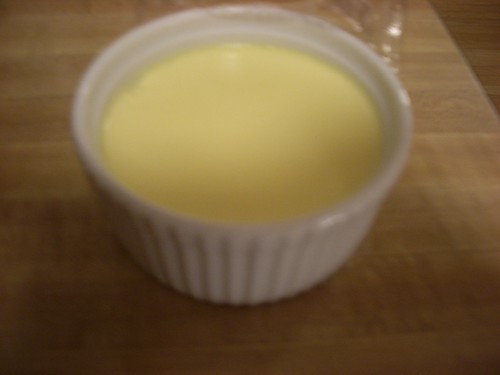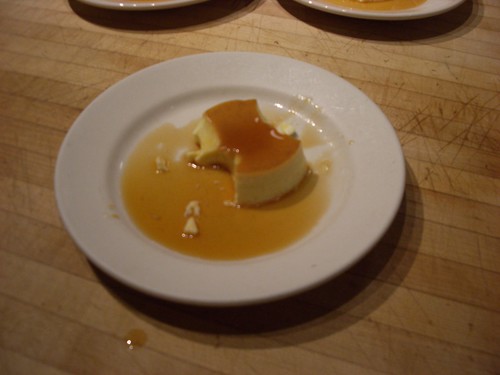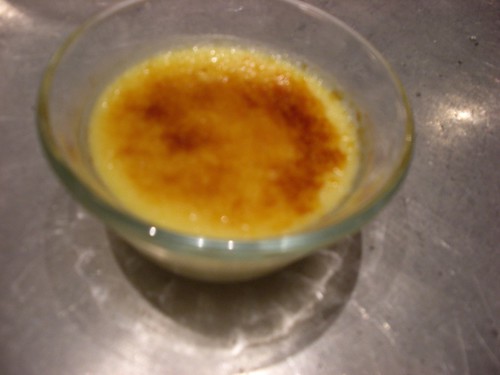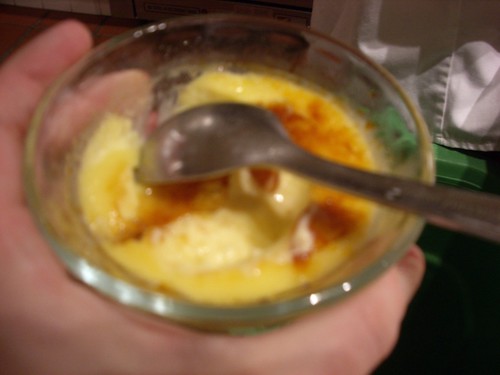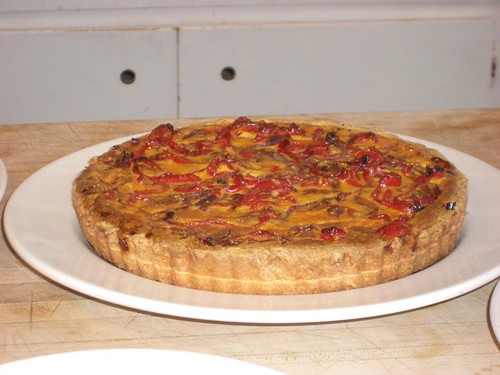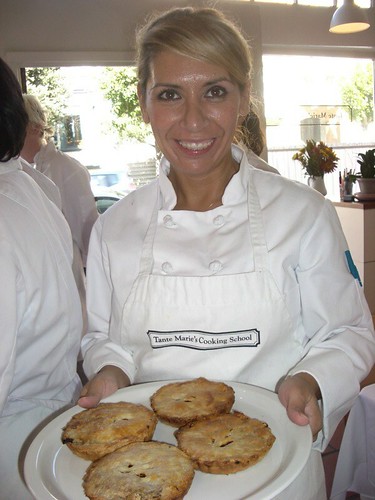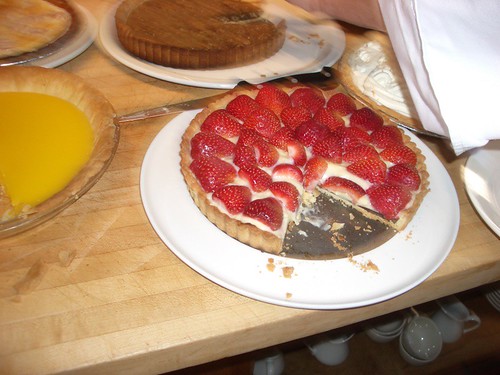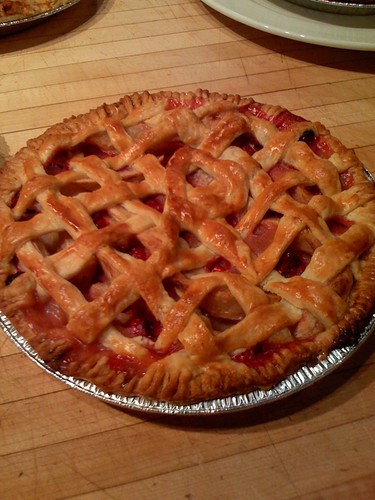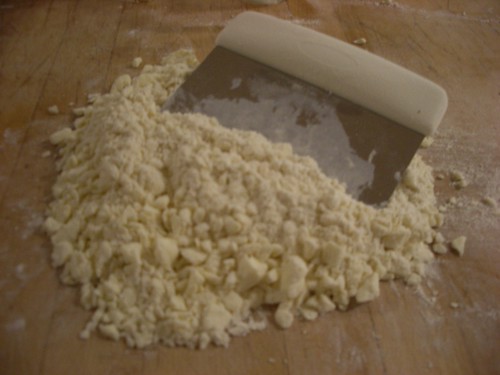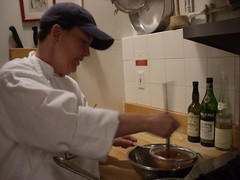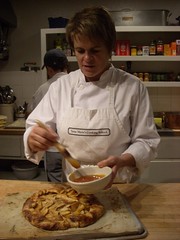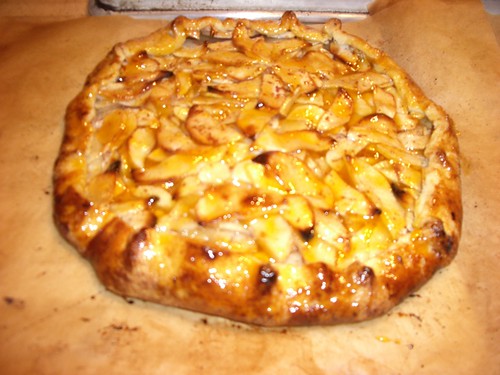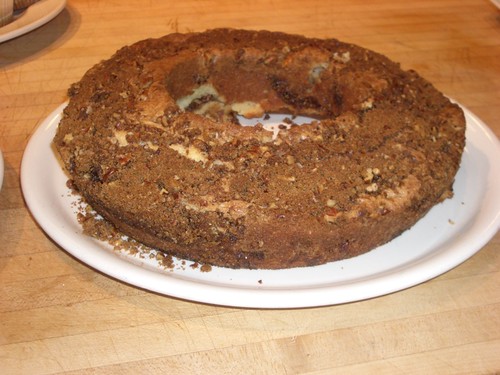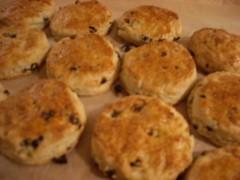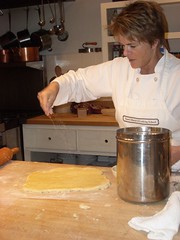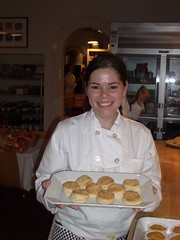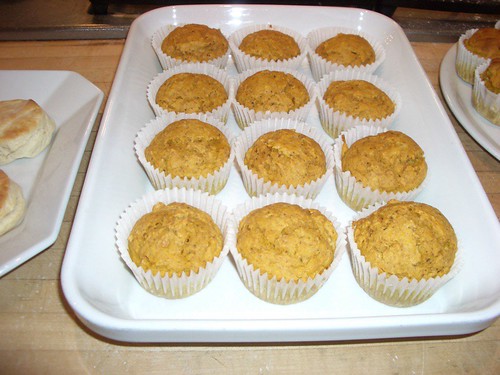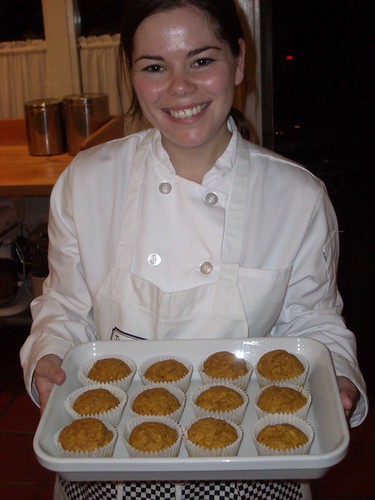Initial conversions:
1/2 stick butter = 4 oz, 1 T = 1/2 oz
Pastry pinch = 2 fingers and 1 thumb
Retail Food Safety
Bacteria grows fastest between 40 and 135 degrees, which is also known as the Danger Zone
F - food; high protein content, eggs, dairy, meat
A - acidity; foods with 4.6 or higher pH
T - temperature; danger zone
T - time; 4 hours (food is ok in danger zone for under 4 hours
O - oxygen
M - moisture; bacteria need moisture to grow.
Jams are ok because they have enough salt and sugar to preserve and take the moisture out.
NOTE: Keep Hot foods HOT and Cold foods COLD.
Functions of ingredients in baking:
1) Flour: Strengthens & dries
has starch and gluten (protein) - produce when we need bread dough
fat coats gluten molecules because it prevents them from combining with each other.
2) Sugar: Moisturizes, absorbs water, Honey & Molasses make it creamy.
3) Eggs: whites strengthens and dry; yolks weaken and moisturize because its all fat
4) Salt; strenthens gluten, moderates yeast activity
5) Baking powder, soda: chemical leavening agents, also creaming method also a leavener
Cookies:
9 types:
Piped - spritz
Dropped/Scoop - choc chip
Rolled/Molded rolled out w/cookie cutters (gingerbreads)
Icebox-cylander
Bar-biscotti, fig newton
Sheet-brownie
Stencil - tuile
tenderizers: butter, fat, liquid, SUGAR also cuts gluten
Eclairs and Cream Puffs
Rise - leaveing agent is steam and eggs
add 2 whites for every 4 eggs
To make crispy cookies chewier;
-add eggs, liquid sugars (honey)
- reduce heat, take off heat quickly
Pastry cream = stirred custard sauce. Cornstarch prevents egg proteins from scrambling.
1 egg = 1 2/3 oz 1 oz =white, 2/3 oz = yolk.
Flour:
Flour is responsible for - prevent sticking, providing structure & strength, thickning liquids.
3 parts
bran - fiber
germ - (all fat) low in protein
Endosperm - flour
Glutenin and Gliadin + water = Gluten
Gluetnin + Gliadin + mechanical action (stir or knead) = gluten
To reduce gluten:
-keep it cold
-low gluten flour
-add more of other ingredients
Chemical Leaveners:
Baking Soda + acid = CO2 + water
Baking Powder = mix of base and acid
Baking Ammonia = must be cooked thoroughly, makes cookies ultra crisp
2 types of baking powder- single acting; chemical reaction occurs in bowl, must be baked right away
double action - 2reactions in bowl & out of bowl ( heat causes 2nd reaction)
Per cup of flour, add 1 - 1/14 tsp baking powder. Baking powder = 2T cream of tarter,1T baking soda, 1 1/2 T corn starch
1/4 tsp baking soda per cup of flour
Quick Breads
Types of batter
dropped - muffins
rolled - scones, biscuits
poured-cake/breads
mixing methods: biscuit, creaming, blending (liquid fat)
Sugar = 1 glucose + fructose
Purpose: tenderizes
increases finesse and texture
color (carmelization)
absorbs moisture
creaming agent with eggs
